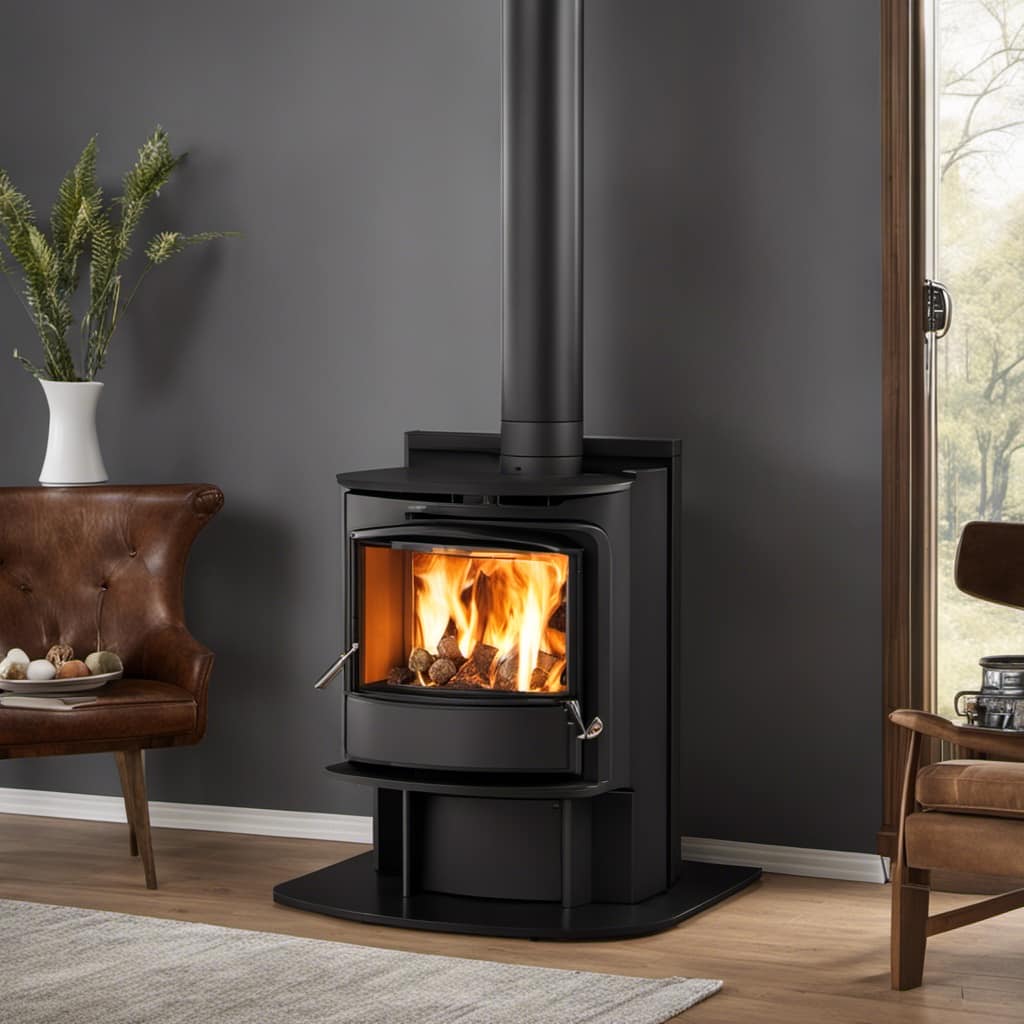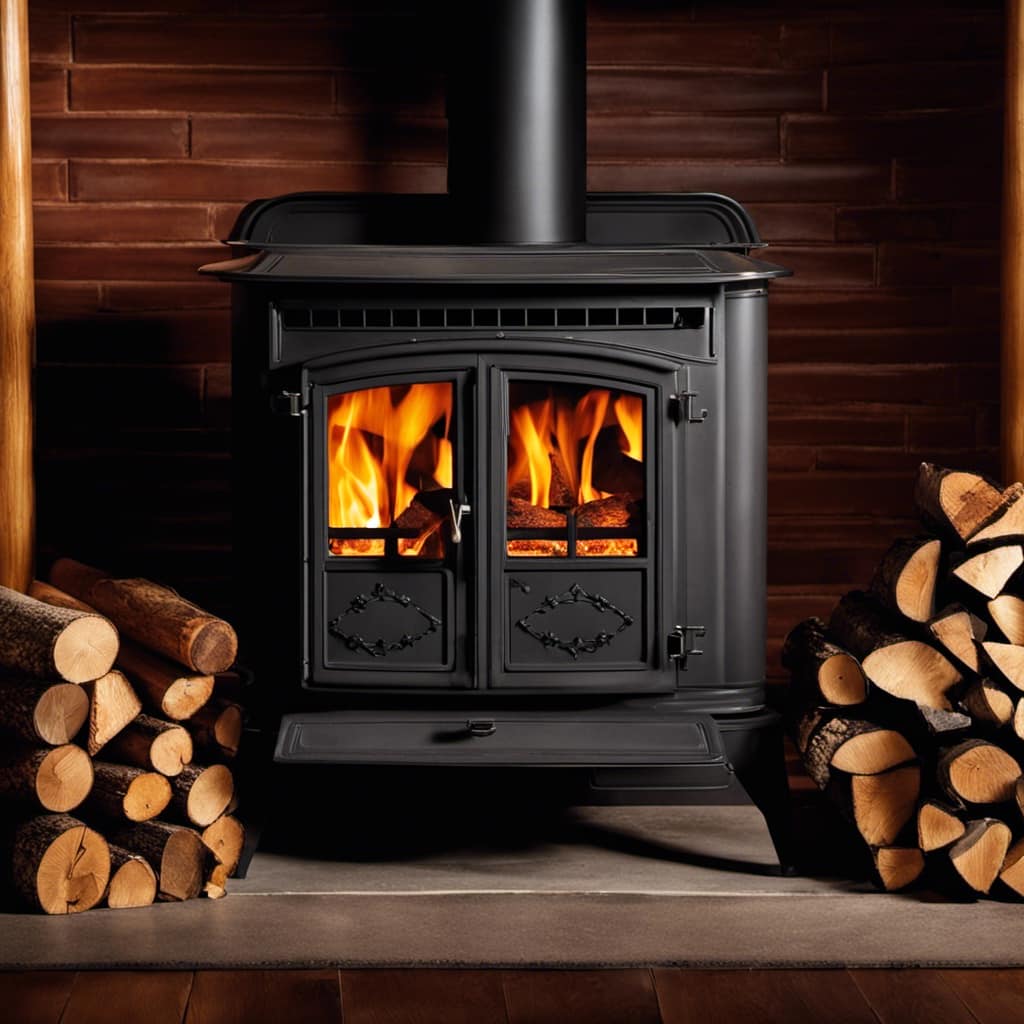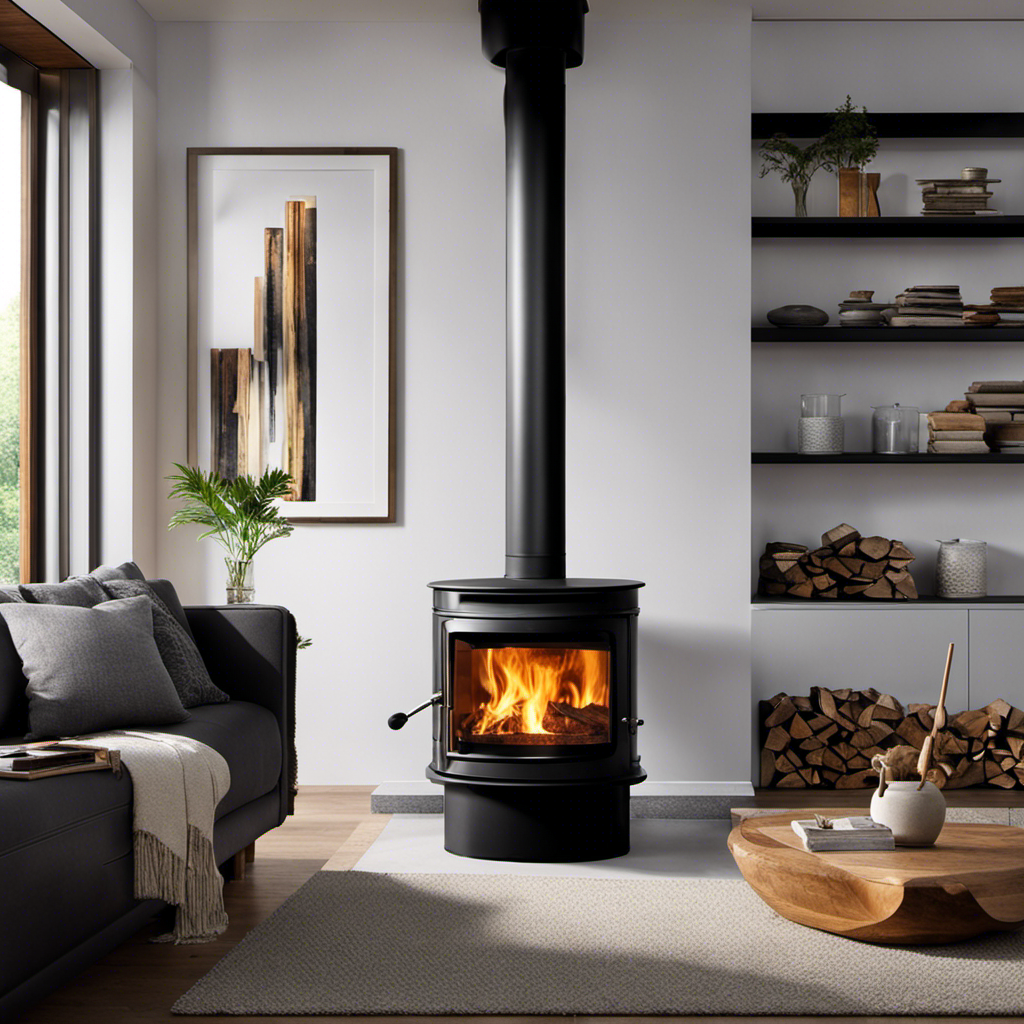
Having experience in the wood stove industry, I have discovered that getting your stove ready for operation is akin to fine-tuning a well-maintained machine. This process guarantees that the stove operates at its best, delivering optimal performance and efficiency.
In this article, I’ll guide you through the essential steps to get your wood stove ready for the cozy nights ahead.
From inspecting and cleaning to chimney maintenance and stocking up on firewood, I’ll share my knowledge and expertise to ensure your wood stove experience is nothing short of exceptional.
Key Takeaways
- Schedule an appointment with a chimney sweep for inspection and cleaning
- Regular maintenance is essential for safety and efficiency
- Proper sealing and insulation prevent heat loss and improve efficiency
- Get enough firewood for a warm and cozy home during winter
Inspection and Cleaning
I need to schedule an appointment with a chimney sweep to inspect and clean my wood stove. When it comes to wood stove maintenance, safety precautions should always be a top priority.

Regular inspection and cleaning are necessary to ensure the safe and efficient operation of the wood stove. A chimney sweep will carefully examine the entire system, including the chimney, flue, and stovepipe, to identify any potential issues or blockages.
They’ll also clean away any creosote buildup, a highly flammable substance that can lead to chimney fires if not removed. The necessary equipment for a thorough inspection and cleaning includes brushes, rods, and a vacuum system to remove any debris.
Chimney Maintenance
To ensure the safety and efficiency of my wood stove, regular chimney maintenance is essential, including inspecting and cleaning the chimney as well as removing any blockages. Flue maintenance plays a crucial role in preventing chimney fires and maintaining proper ventilation. One important aspect of chimney maintenance is hiring a professional chimney sweep. A chimney sweep has the expertise and specialized tools to thoroughly clean the flue, removing creosote buildup and other debris that can obstruct airflow. Additionally, it is important to inspect the chimney for any cracks or damage that could compromise its structural integrity. Regular maintenance also involves checking the chimney cap and spark arrestor for any damage or blockages. By following these maintenance practices, I can ensure that my wood stove operates safely and efficiently throughout the year.
| Flue Maintenance Steps | Description |
|---|---|
| Inspecting the Flue | Check for cracks or damage that may require repairs. |
| Cleaning the Flue | Hire a professional chimney sweep to remove creosote buildup. |
| Checking Chimney Cap | Ensure the cap is intact and free of any debris. |
| Examining Spark Arrestor | Inspect for damage and remove any blockages. |
| Removing Blockages | Clear any obstructions found in the flue or chimney. |
Sealing and Insulation
Proper sealing and insulation around the chimney can prevent heat loss and improve the overall efficiency of my wood stove. Weatherproofing is essential to keep the cold air out and ensure that the warm air stays inside. One of the key areas to focus on is the chimney cap. It should be tightly sealed to prevent any drafts from entering the house.

Additionally, the area around the chimney where it meets the roof should be properly sealed with weatherproofing materials to prevent any leaks. Insulating the chimney itself can also help to retain heat and improve the efficiency of the wood stove.
Draft control is another important aspect to consider. Installing a damper in the chimney can help regulate the airflow and prevent excess drafts. By properly sealing and insulating the chimney, I can ensure that my wood stove operates efficiently and effectively.
Now, let’s move on to the next step: stocking up on firewood.
Stocking Up on Firewood
Getting enough firewood for the winter is essential to ensure a warm and cozy home during the colder months. Proper firewood storage and seasoning are crucial steps to maximize the efficiency and effectiveness of your wood stove.

When it comes to firewood storage, it’s important to keep the wood off the ground to prevent moisture absorption and promote airflow. A raised firewood rack or a designated storage shed can help achieve this. Additionally, firewood should be stacked in a way that allows air circulation between the logs. This will aid in the seasoning process, which involves drying the wood to reduce moisture content.
Well-seasoned firewood burns cleaner, produces more heat, and minimizes creosote buildup in the chimney. As we discuss firewood and its preparation, it’s important to address safety measures to ensure a worry-free wood stove experience.
Safety Measures
I always prioritize safety when using my wood stove, taking necessary precautions to ensure a worry-free experience.
Safety precautions are crucial when it comes to operating a wood stove. First and foremost, it’s essential to have proper ventilation in the room where the stove is located. This is important to prevent the buildup of harmful gases, such as carbon monoxide.

Make sure that the flue is open and clean, allowing for the efficient release of smoke and gases. Additionally, it’s essential to have a carbon monoxide detector installed near the wood stove to provide an early warning system in case of any leaks.
Furthermore, always use a fire screen or glass door to prevent sparks or embers from escaping the stove and causing a potential fire hazard.
Frequently Asked Questions
How Often Should I Clean the Glass Door of My Wood Stove?
I clean the glass door of my wood stove regularly to maintain its clarity and efficiency. The cleaning frequency depends on usage, but a general guideline is once every 1-2 weeks. I find that using a glass cleaner specifically formulated for wood stoves works best.
Can I Burn Pine Cones and Other Types of Wood in My Wood Stove?
Yes, you can burn pine cones and other types of wood in your wood stove. However, it’s important to note that certain woods, like oak or birch, are better alternatives as they produce more heat and less smoke.

What Are Some Common Signs of a Malfunctioning Wood Stove?
Common signs of a malfunctioning wood stove include excessive smoke, difficulty in igniting or maintaining a fire, erratic heat output, strange odors, and visible damage to the stove or chimney.
How Do I Know if My Chimney Needs to Be Swept?
I can tell if my chimney needs to be swept by looking for signs of a dirty chimney, like a buildup of soot or creosote. Regular chimney maintenance is important to prevent fires and ensure proper ventilation.
What Should I Do if I Smell Smoke Inside My House When Using the Wood Stove?
If I smell smoke inside my house when using the wood stove, I would troubleshoot the issue by checking for proper ventilation, ensuring the damper is open, and inspecting the chimney for any blockages or leaks. Preventing smoke inside is crucial for safety.
Conclusion
In conclusion, by following these steps, you can ensure that your wood stove is properly prepared for use.

Regular inspection and cleaning will keep it functioning efficiently, while chimney maintenance prevents potential hazards.
Sealing and insulation improve the stove’s performance, and stocking up on firewood ensures you’re always ready for a cozy fire.
Lastly, don’t forget to prioritize safety measures to enjoy the warmth and ambiance of your wood stove without any worries.
Now, sit back, relax, and let the crackling fire embrace you in its comforting embrace.

Growing up surrounded by the vast beauty of nature, Sierra was always drawn to the call of the wild. While others sought the comfort of the familiar, she ventured out, embracing the unpredictable and finding stories in the heartbeat of nature.
At the epicenter of every remarkable venture lies a dynamic team—a fusion of diverse talents, visions, and passions. The essence of Best Small Wood Stoves is crafted and refined by such a trio: Sierra, Logan, and Terra. Their collective expertise has transformed the platform into a leading authority on small wood stoves, radiating warmth and knowledge in equal measure.











